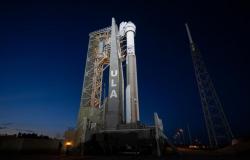After decades, America successfully returns to the Moon and sets the stage for future human missions.
Kennedy Space Center marked a triumphant return to the Moon with the launch of the Artemis I mission, ushering in a new era of space exploration. During the 25.5-day mission, the Orion spacecraft performed two lunar flybys, coming within just 129 kilometers of the lunar surface and reaching a maximum distance of approximately 435,000 kilometers from Earth.
The mission
The culmination of Artemis I was the parachute-assisted reentry into the Pacific Ocean, successfully completing the mission’s last major milestone. This feat not only exceeded efficiency and performance expectations, but also set new safety standards for humans in deep space.
The launch and preparation
The launch phases showed the exceptional power of the rocket, described as the most powerful in the world. After years of testing and preparation, Artemis I once again brought global dreams and aspirations to the Moon. The emotion of the team, made up of many who were not even born during America’s last lunar mission, was palpable. The mission marked a significant turning point, demonstrating that America is ready to make great future strides in lunar exploration and beyond.
Beyond the Moon
The Artemis I mission wasn’t just a return to the Moon; it also laid the groundwork to demonstrate that humans can live and work on Earth’s satellite, establishing an outpost for future explorations to Mars and beyond. The entire process, from departure from Earth to reentry, was a critical test for the systems and technologies employed, especially for Orion’s heat shield, which is crucial for the safety of the crew on future missions.
Future perspectives
With the success of Artemis I, the stage is now set for Artemis II, which will see humans flying around the Moon. The enthusiasm and sense of accomplishment among NASA members and international partners is immense, heralding an era of global cooperation in space. Artemis I isn’t just a mission accomplished; it is the beginning of a new frontier for human space exploration, marking a moment of pride and limitless potential for future generations.
Cultural and scientific impact
The mission has captured the imagination of a new generation, dubbed the “Artemis Generation,” who see returning to the Moon not only as a technological feat, but also as a symbol of what humanity can aspire to achieve. With every image transmitted from Orion, with every technical success achieved, NASA continues to inspire the world, reaffirming its commitment to leading the exploration of deep space.
Image: courtesy NASA.
I like:
I like Loading…
Comments
comments






